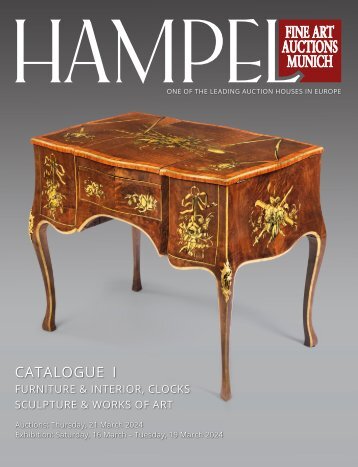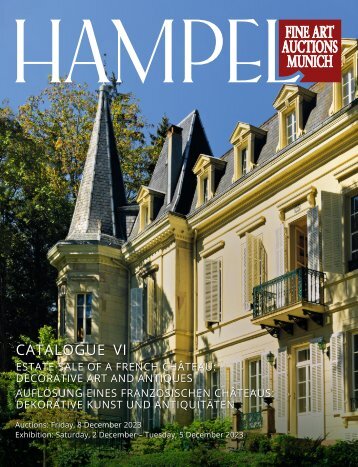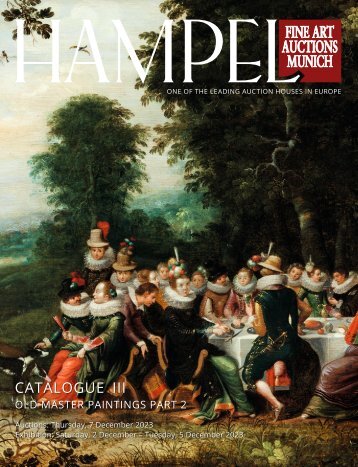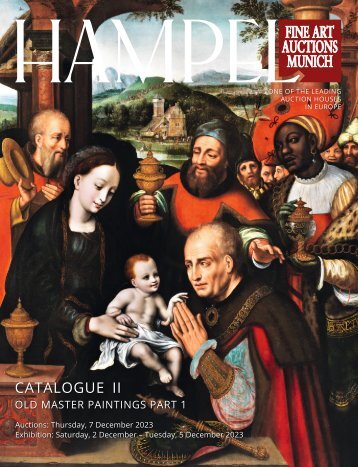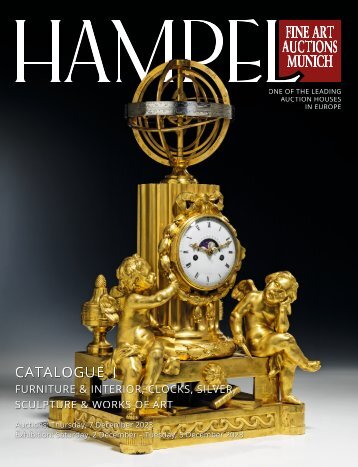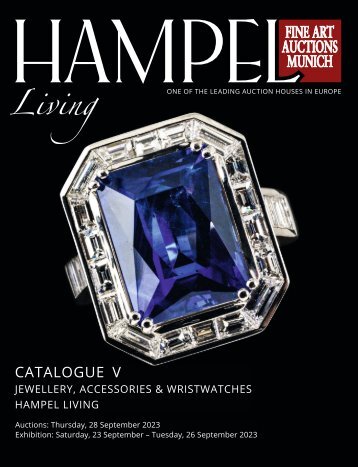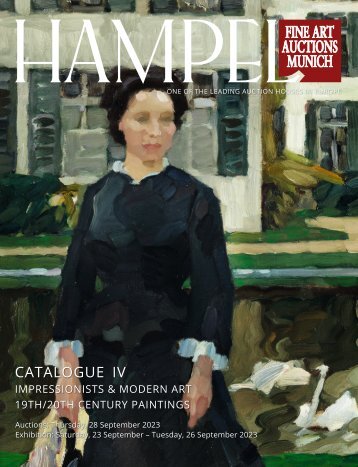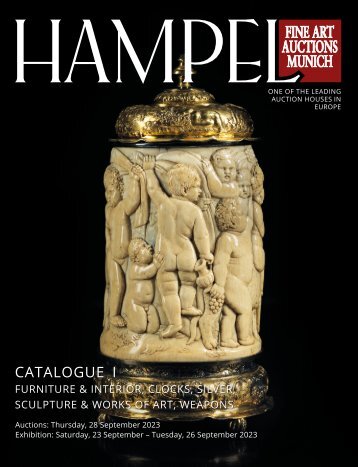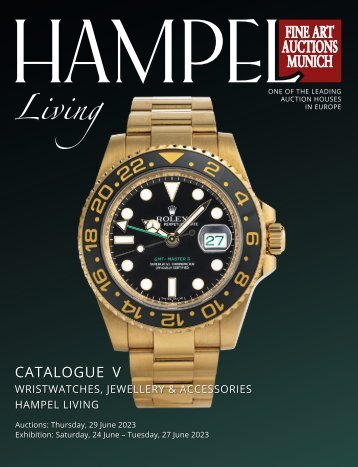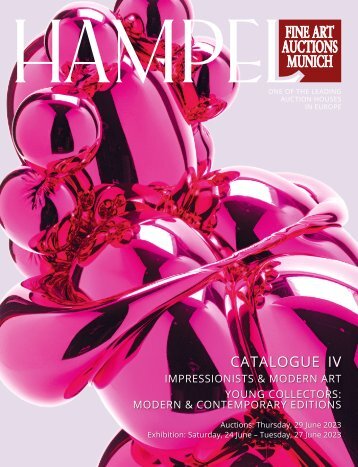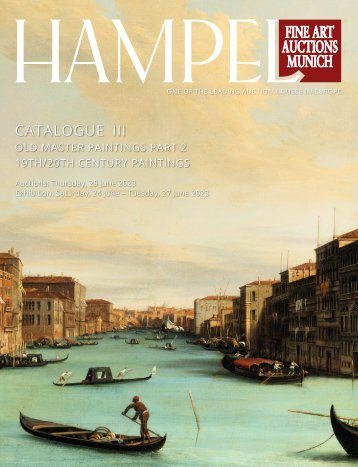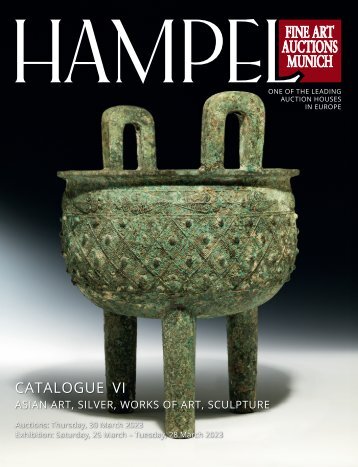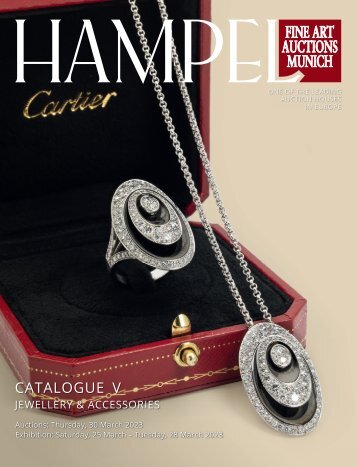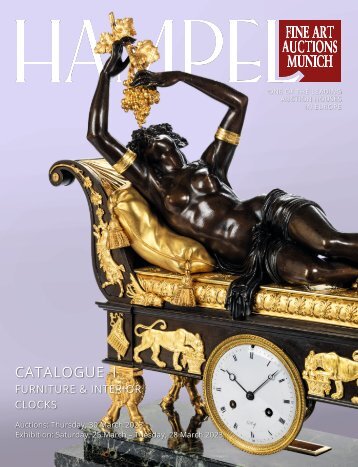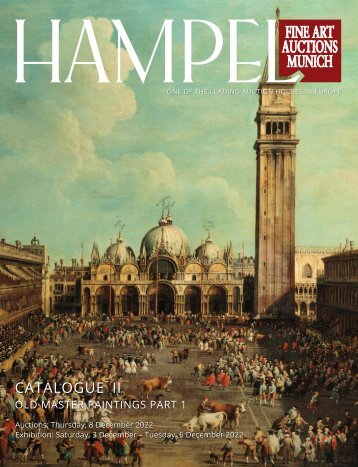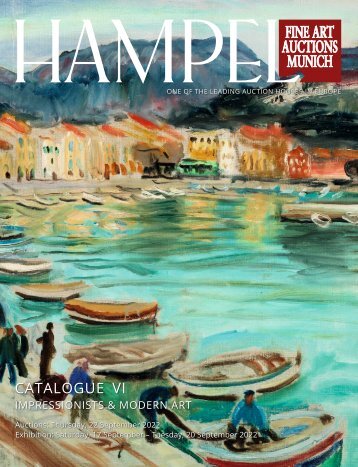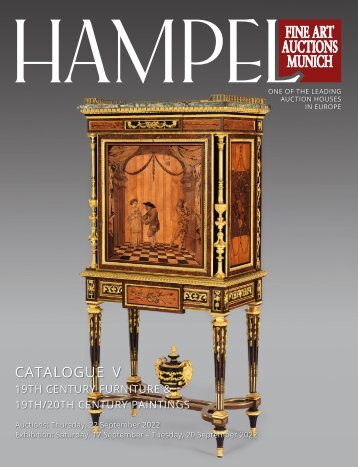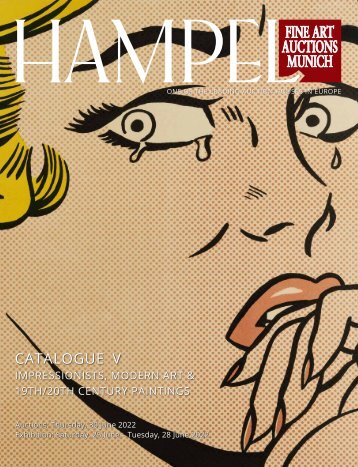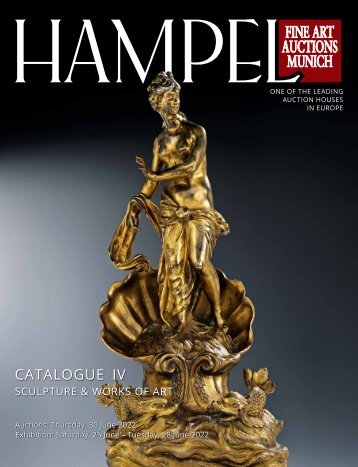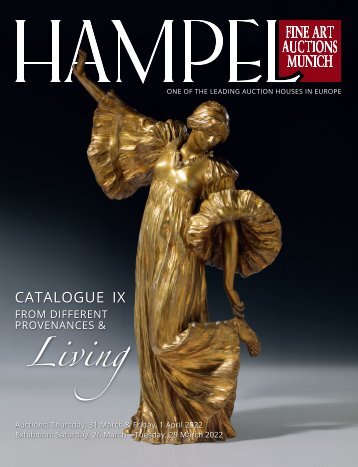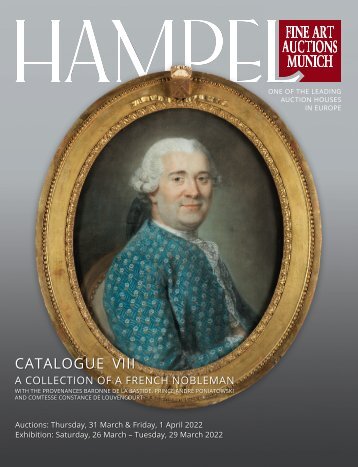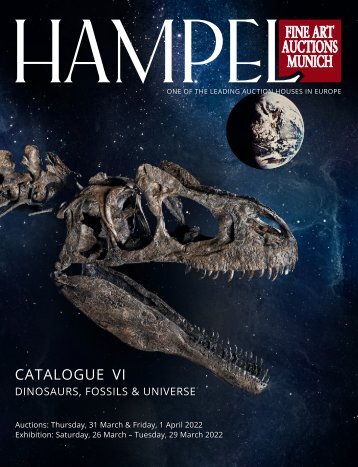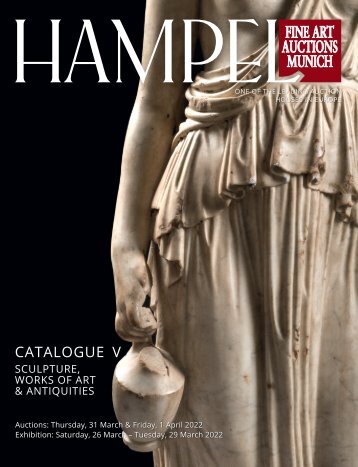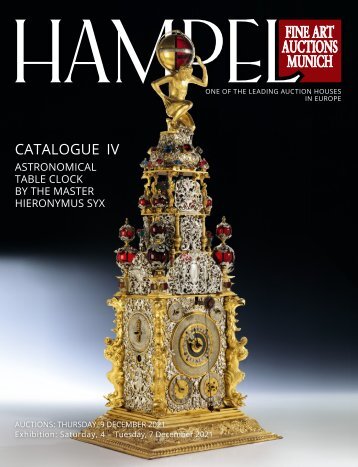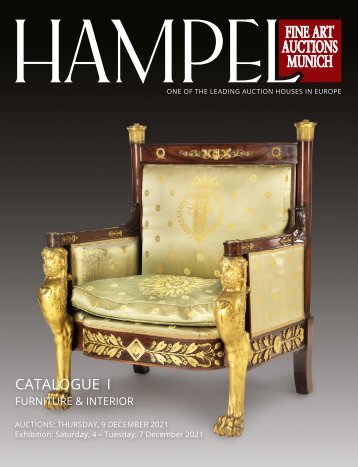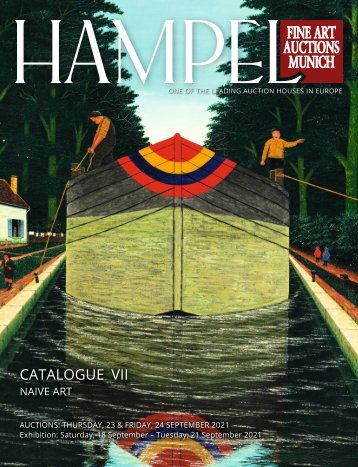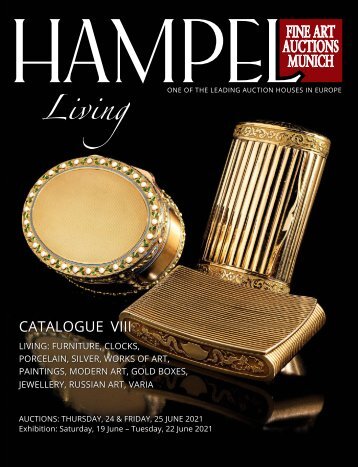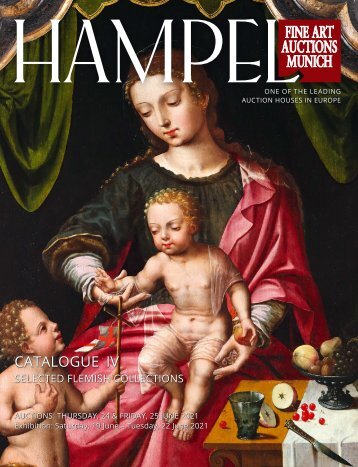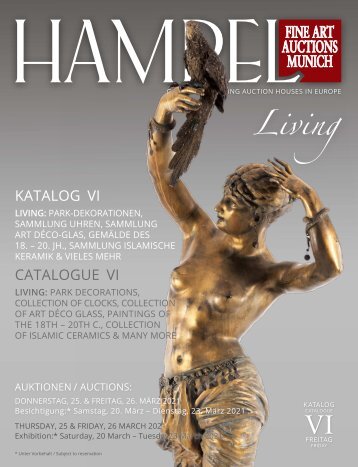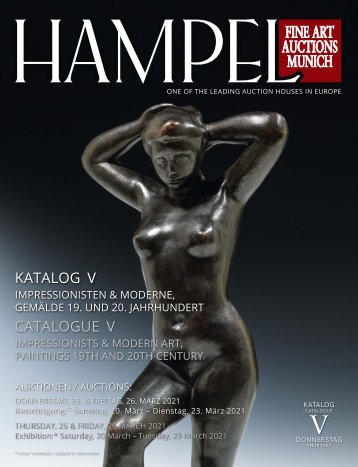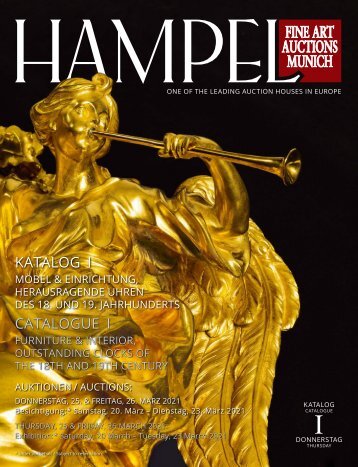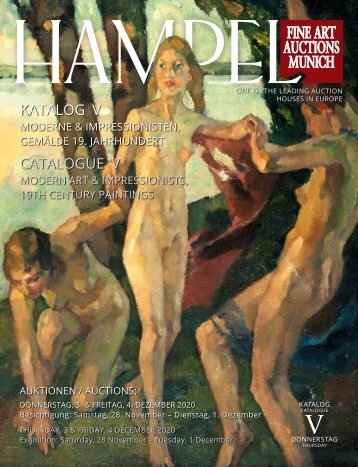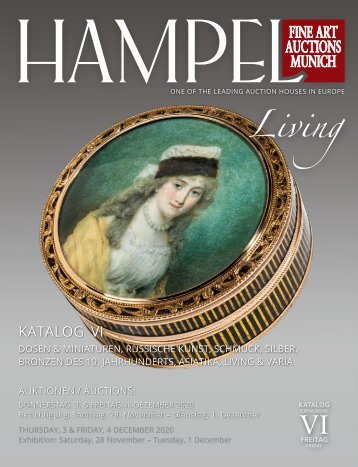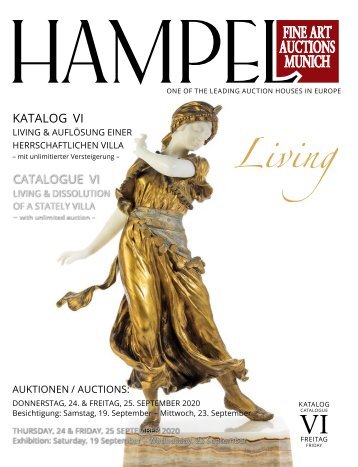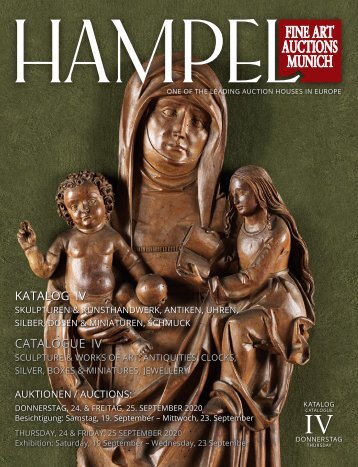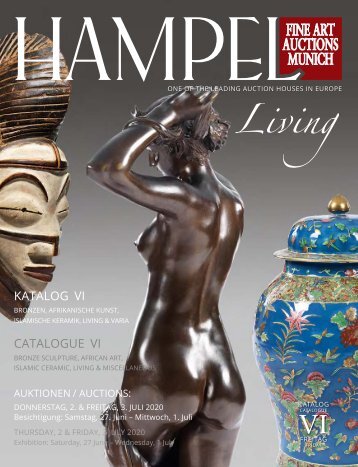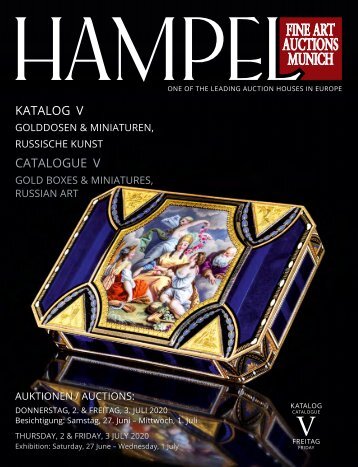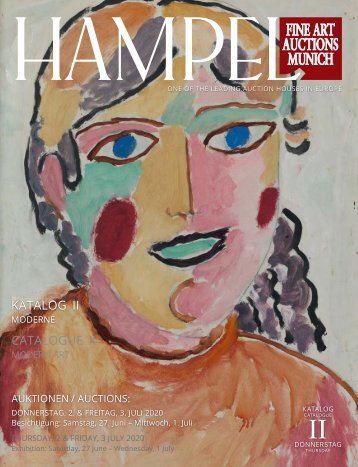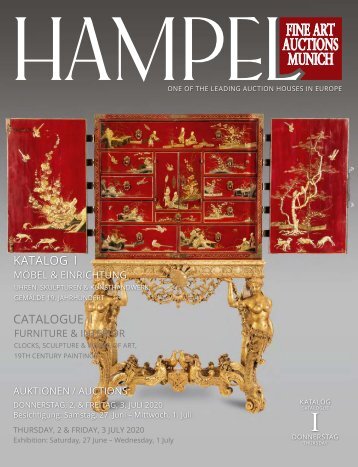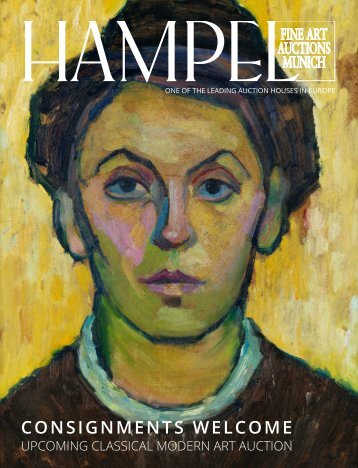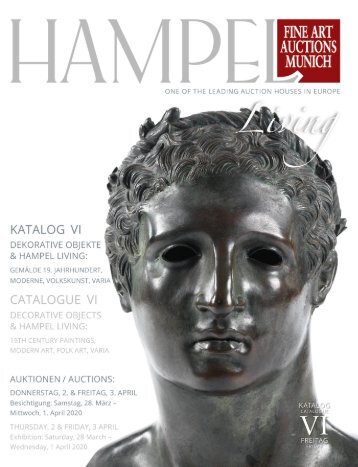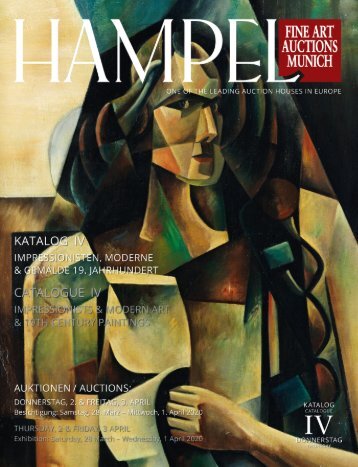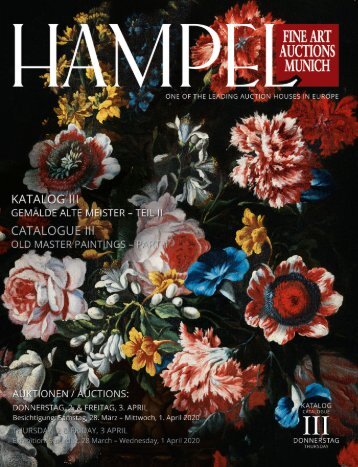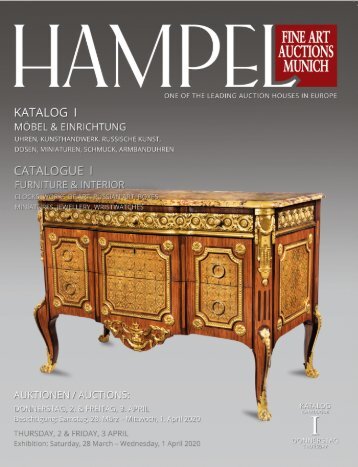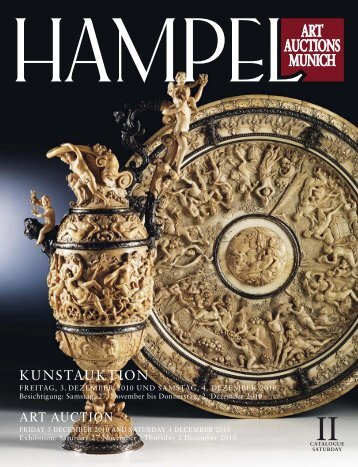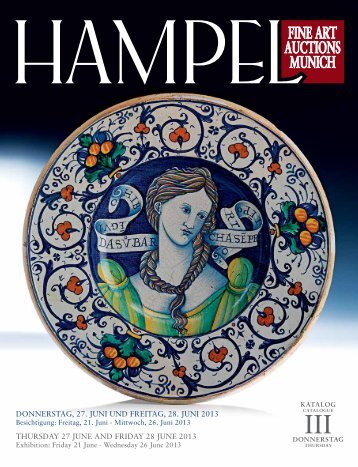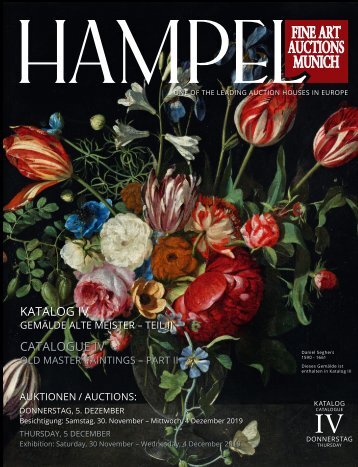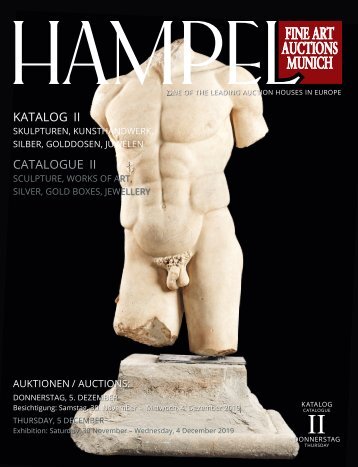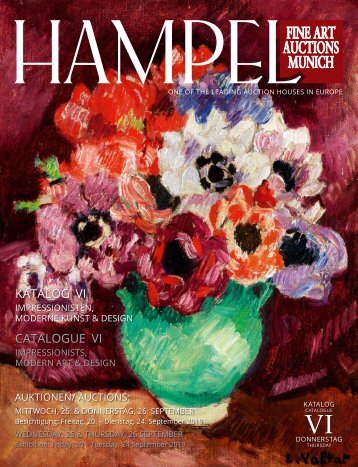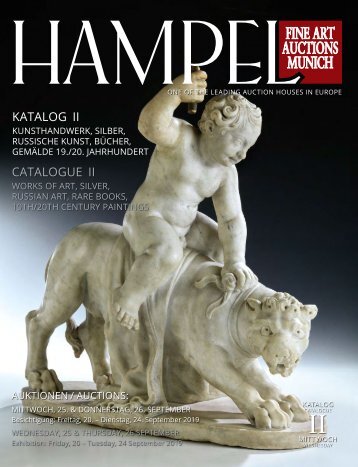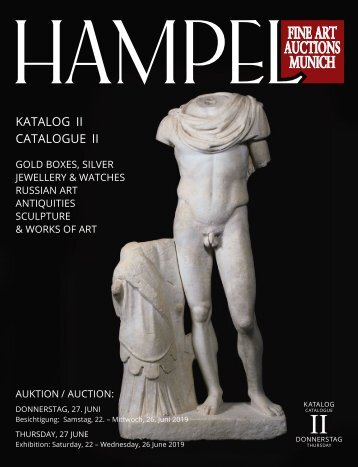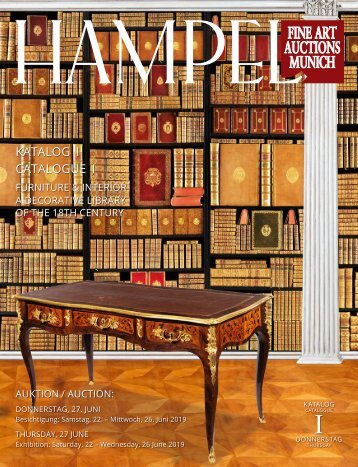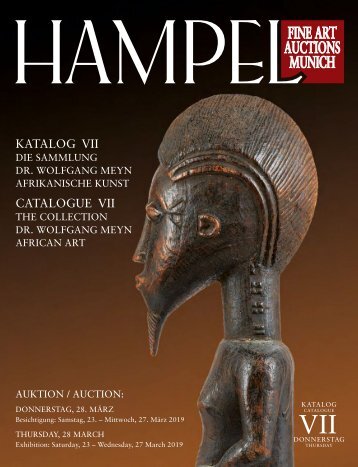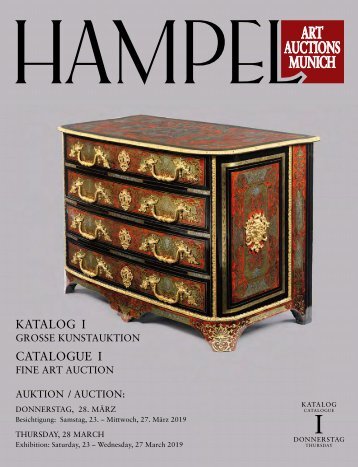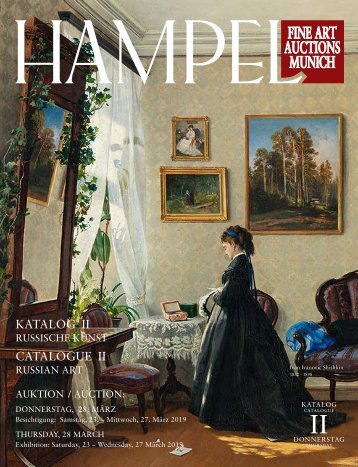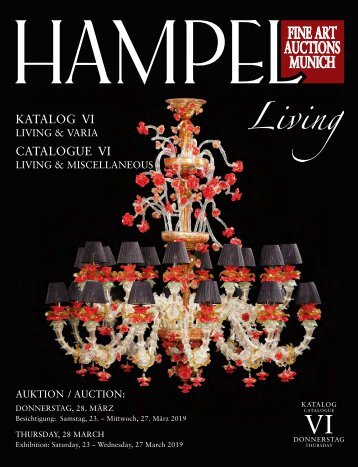Old Master Paintings – Part I
- Text
- Wwwhampelauctionscom
137 RAFFAELLO SANTI,
137 RAFFAELLO SANTI, GENANNT „RAPHAEL“, 1483 – 1520, KREIS DES MADONNA MIT KIND Öl auf Holz, Tondo. Durchmesser: 87,5 cm. Bekanntlich hat Raphael eine Reihe vergleichbarer Madonnenbilder im Tondoformat geschaffen. Die zumeist in der Frühphase seines Wirkens entstandenen Madonnenbilder sind bis heute Gegenstand der Forschung und kunstwissenschaftlichen Interesses, da über die frühe Schaffensweise Raphaels nur wenig bekannt geworden ist. Manche der überkommenen Bilder sind nur durch Zuschreibungen dem Meister zuerkannt. Bei vorliegendem Werk ist zweifellos eine sehr hohe Malqualität zu erkennen, demnach ist ein Maler aus dem engen Kreis um Raphael anzunehmen. Der Stil weist auf Werke Raphaels aus dessen Frühzeit. Zudem bestätigen auch die technischen Untersuchungen eine frühe Entstehungszeit, wofür die Jahre um 1505 anzunehmen sind. Hier ist der Vergleich mit einem Originalwerk Raphaels in der National Gallery of Art in Washington angebracht, der sogenannten „Small Cowper-Madonna“ (Abb. 1). Die Frage, ob der Maler unseres vorliegenden Tondo eine Vorzeichnung Raffaels zuhilfe genommen hat, muss offen bleiben. Möglich wäre auch, dass das Rundbild nach Abpause des Raphael-Werkes geschaffen wurde. Technische Untersuchungen durch Gianluca Poldi mit Infrarotreflektographie und Röntgenfluoreszenz haben jedenfalls Unterzeichnungen erkennen lassen. Zudem haben Farbanalysen gezeigt, dass die Materialverwendung unter Hinzunahme von extrem feinen Glaspartikeln auch bei Werken Raphaels und dessen Werkstatt zu finden ist. So erweisen die genannten und weiteren Untersuchungen, dass Materialien und Technik ganz der Praxis des 16. Jahrhunderts entsprechen. Der bildinhaltliche Unterschied zu Raphaels Gemälde ist deutlich: bei aller Übernahme der Hauptmotive ist in vorliegendem Bild ein Tuch über die rückwärtige Brüstung gelegt, die Landschaftselemente im Hintergrund zeigen sich stark verändert; anstelle eines Kirchengebäudes rechts ist hier nun eine Baumgruppe gezeigt; links hat der Maler einen jungen Baum zwischen Felsengruppierungen eingefügt, was als ikonografisches Symbol des jungen Christentums zu deuten ist. Des Weiteren kann hier der Vergleich mit der ebenfalls um 1505 entstandenen „Northbrook Madonna“ im Worcester Art Museum Massachusetts herange zogen werden, die dem Maler Alfani zugewiesen wird (Abb. 2). Hier finden wir ebenfalls eine vergleichbar dunkelfarbige Brüstung im Hintergrund. Der Bildaufbau folgt also insgesamt den seit Perugino tradierten, und von Raphael fortgesetzten Motiven mit Brüstung im Rücken der Madonnenfigur sowie des landschaftlichen Hintergrundes. Insgesamt kann das vorliegende Gemälde als ein fein ausgeführtes, bedeutendes Werk des Künstlerumfeldes von Raphael gewürdigt werden. A.R. RAFFAELLO SANTI, ALSO KNOWN AS “RAPHAEL“, 1483 – 1520, CIRCLE OF THE VIRGIN AND CHRIST CHILD Oil on panel, Tondo. Diameter: 87.5 cm. It is common knowledge that Raphael created a series of similar Madonna paintings in tondo format. Most of them were created in the early phase of his œuvre, as is the case in the present lot, and they are still the subject of research and art historical interest, as little is known about Raphael”Ts early creative methods. Some of the surviving pictures can only be attributed to the master. As the work on offer for sale here undoubtedly displays a very high quality of painting, it can be assumed that it was created by a painter from Raphael”Ts close circle. In addition, the technical investigations also confirm an early date of creation, around ca. 1505. For example, a comparison with an original work by Raphael in the National Gallery of Art in Washington, the so-called “Small Cowper Madonna“ (fig. 1), is fitting. It is questionable if the painter of the present tondo used a preliminary drawing by Raphael. It is also possible that it was copied from one of his works. A technical survey by Gianluca Poldi using infrared reflectography and X-ray fluorescence revealed underdrawings. In addition, paint analysis revealed that the use of material with the addition of extremely fine glass particles can also be found in works by Raphael and his workshop. The above and further research shows that the materials and technique correspond entirely with 16th century painting practice. The difference in the image content to Raphael”Ts painting is obvious: although the main motifs have been adopted, a cloth has been laid over the rear balustrade and the landscape elements in the background have been significantly altered in the present painting: Instead of a church building on the right, a group of trees is shown here and on the left, the painter inserted a young tree between groups of rocks, which can be interpreted as an iconographic symbol of early Christianity. Furthermore, it compares well with the “Northbrook Madonna” held at the Worcester Art Museum Massachusetts, which was also created around 1505 and is attributed to the painter Alfani (fig 2). It also shows a similar dark-coloured balustrade in the background. The composition of the picture thus follows the motifs handed down from Perugino and continued by Raphael, with the balustrade behind the Madonna figure and the landscape background. Overall, the present painting can be appreciated as a finely executed, important work from Raphael’s circle. Provenance: Private collection, Europe, acquired in ca. 2000. € 120.000 - € 250.000 Sistrix INFO | BID Provenienz: Europäische Privatsammlung, zuletzt erworben um 2000. (13300588) (2) (11) 50 HAMPEL ONLINE Visit www.hampel-auctions.com for around 6.500 additional images.
Translate all texts into your preferred language on our homepage via Google: www.hampel-auctions.com 51
- Page 1: ONE OF THE LEADING AUCTION HOUSES I
- Page 4: 121 MEISTER DER „MADONNA LAZZARON
- Page 8: Detailabbildung 123 LOMBARDISCHER M
- Page 11 and 12: Translate all texts into your prefe
- Page 14: 126 MEISTER MIT DEM GOLDBROKAT Öl
- Page 18: ALVISE LUIGI VIVARINI, CA. 1445 VEN
- Page 22 and 23: 129 LAMBERT SUSTRIS, 1515/16 - UM 1
- Page 24 and 25: 34 HAMPEL ONLINE Visit www.hampel-a
- Page 26 and 27: 130 MARCO D‘OGGIONO, UM 1475 OGGI
- Page 28 and 29: 131 BOLOGNESER SCHULE DES AUSGEHEND
- Page 30: 132 PIETER COECKE VAN AELST, 1502 A
- Page 34: 134 JACOPO ROBUSTI, GENANNT "TINTOR
- Page 38: 136 GIOVANNI MARIA BUTTERI, UM 1540
- Page 44: 139 GIOVANNI NAVESI, UM 1550 FLOREN
- Page 48: 141 JUSEPE DE RIBERA, GENANNT „LO
- Page 51 and 52: Translate all texts into your prefe
- Page 56: 143 LOMBARDISCHER MALER UM 1600 MAR
- Page 59 and 60: 145 CARLO CIGNANI, 1628 BOLOGNA - 1
- Page 61 and 62: 146 MEISTER DER BOLOGNESER SCHULE,
- Page 64: 148 ORAZIO GENTILESCHI, 1563 PISA -
- Page 68 and 69: 150 CARLO FRANCESCO NUVOLONE, 1608/
- Page 70: 151 GIOVANNI FRANCESCO BARBIERI, GE
- Page 74: 153 TINTORETTO, EIGENTLICH „DOMEN
- Page 78: 155 DENYS FIAMMINGO CALVAERT, GENAN
- Page 83 and 84: 158 FLÄMISCHER MEISTER DES 17. JAH
- Page 85 and 86: JACOB DE BACKER, 1540/45 ANTWERP -
- Page 89 and 90:
161 JAN HARMENSZ VAN BYLERT, UM 159
- Page 91:
Translate all texts into your prefe
- Page 97:
164 PAUL BRIL, UM 1553/54 BREDA - 1
- Page 100 and 101:
166 PAUL BRIL, UM 1553/54 ANTWERPEN
- Page 102 and 103:
168 JAN BRUEGHEL D. Ä., 1568 BRÜS
- Page 104 and 105:
169 JAN BOOTS, GEB. UM 1620 In Antw
- Page 108 and 109:
170 HENDRIK VAN CLEVE III, UM 1525
- Page 110 and 111:
171 BARENT AVERCAMP, 1612 KAMPEN -
- Page 112:
172 FRANZÖSISCHE SCHULE DES 17. JA
- Page 116:
174 PETER PAUL RUBENS, 1577 - 1640,
- Page 120:
176 NIEDERLÄNDISCHER MALER DES 17.
- Page 123:
Translate all texts into your prefe
- Page 127:
Translate all texts into your prefe
- Page 131:
Translate all texts into your prefe
- Page 134:
181 JAN BRUEGHEL D. J., 1601 ANTWER
- Page 137 and 138:
Translate all texts into your prefe
- Page 140:
184 ABRAHAM JANSSENS, 1575 ANTWERPE
- Page 143 and 144:
Translate all texts into your prefe
- Page 146:
187 JUAN BAUTISTA MARTÍNEZ DEL MAZ
- Page 150 and 151:
189 DIRCK HALS, 1591 HAARLEM - 1656
- Page 152:
190 GILLIS VAN TILBORGH D. J., 1615
- Page 155 and 156:
Translate all texts into your prefe
- Page 158 and 159:
193 HOLLÄNDISCHE SCHULE DES 17. JA
- Page 160 and 161:
195 JAN GRIFFIER, D. Ä., 1645/56 A
- Page 162 and 163:
196 ADEODATO ZUCCATI, 1680 BOLOGNA
- Page 166:
197 ASCANIO LUCIANI, UM 1621 - 1706
- Page 169 and 170:
198 GIOVANNI PAOLO PANINI, 1691 PIA
- Page 173 and 174:
200 ALESSANDRO MAGNASCO, UM 1667 GE
- Page 179 and 180:
202 GIOVANNI ANTONIO CANAL, GENANNT
- Page 182:
GIOVANNI ANTONIO CANAL, ALSO KNOWN
- Page 188 and 189:
204 GIOVANNI ANTONIO CANAL, GENANNT
- Page 192 and 193:
205 WILLIAM JAMES, TÄTIG 1730 - 17
- Page 194:
206 MEISTER DER LANGMATT FOUNDATION
- Page 199:
Translate all texts into your prefe
- Page 203:
Translate all texts into your prefe
- Page 206 and 207:
MICHELE GIOVANNI MARIESCHI, 1696/17
- Page 208:
GIANDOMENICO TIEPOLO, 1727 VENICE -
- Page 212:
GIOVANNI ANTONIO GUARDI, 1698/99 VI
- Page 217:
Translate all texts into your prefe
- Page 220:
213 FRANCESCO GUARDI, 1712 VENEDIG
- Page 223 and 224:
FRANCESCO GUARDI, 1712 VENICE - 179
- Page 225 and 226:
FRANCESCO GUARDI, 1712 VENICE - 179
- Page 227:
Die beiden Bilder sind also in der
- Page 232 and 233:
218 VINCENZO CHILONE, 1758 VENEDIG
- Page 234 and 235:
219 FRANCESCO TIRONI, UM 1745 VENED
- Page 236 and 237:
220 JACOB VAN HUCHTENBURG, UM 1640/
- Page 238:
JACOB VAN HUCHTENBURG, CA. 1640/45
- Page 242 and 243:
222 JACQUES BEERNAERT, TÄTIG UM 17
- Page 244 and 245:
223 PIETER HOFMANS, 1642 ANTWERPEN
- Page 248:
224 ANDREA APPIANI D. Ä., 1754 MAI
- Page 251 and 252:
PIETRO LIBERI, 1614 PADUA - 1687 VE
- Page 254 and 255:
227 ANTONIO BALESTRA, 1666 VERONA -
- Page 256:
228 CLAUDIO FRANCESCO BEAUMONT, 169
- Page 260:
CHARLES ANDRÉ VAN LOO, 1705 - 1765
- Page 264 and 265:
231 LOUIS JOSEPH WATTEAU, GENANNT
- Page 266:
232 PHILIPPE DE MARLIER, UM 1600 -
- Page 270:
JAN VAN OS, 1744 - 1808 STILL LIFE
- Page 274 and 275:
235 CHARLES FRANÇOIS LACROIX DE MA
- Page 276:
236 JEAN MARC NATTIER, 1685 PARIS -
- Page 280:
Detailabbildungen zu Lot 237
- Page 284:
239 CAREL DE MOOR, 1656 LEIDEN - 17
- Page 288:
CATALOGUE III OLD MASTER PAINTINGS
Inappropriate
Loading...
Mail this publication
Loading...
Embed
Loading...
HAMPEL FINE ART AUCTIONS
HAMPEL Fine Art Auctions Munich
Schellingstr. 44 | 80799 Munich
Phone +49 89 28 804-0
office@hampel-auctions.com

